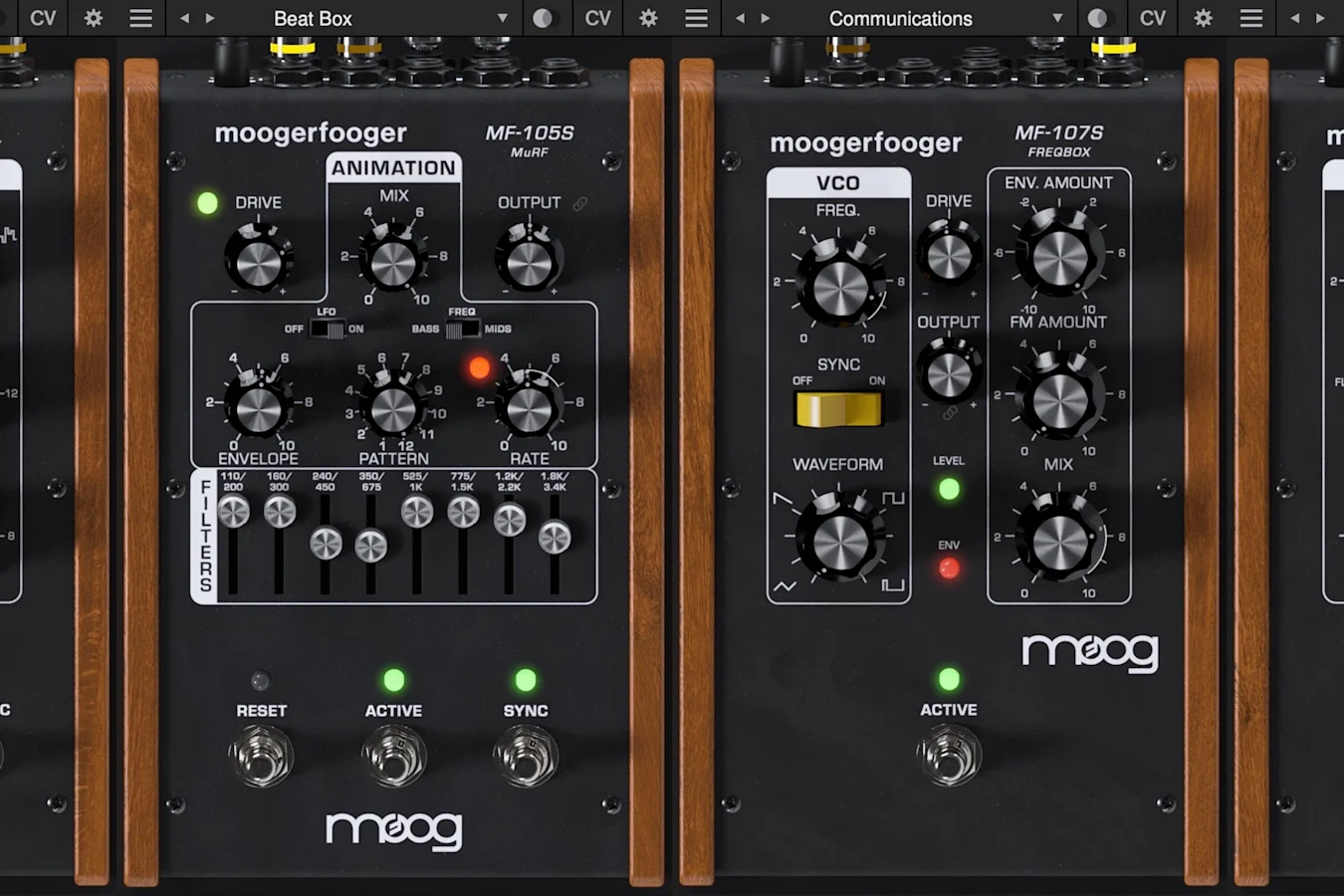Moog resurrects Moogerfooger effects as a collection of digital plugins
Moogerfoogers are among some of the most sought after effects pedals out there. They were originally introduced in 1998 and were in many ways direct descendants of some of the . They were in 2018, but even during their lifespan they could be difficult to get a hold of thanks to limited production. Because of this they command quite the premium on the used market, with the MF-104 Analog Delay sometimes fetching north of $1,500.
But just four years after pulling the plug, Moog is bringing the family back to life, just as a series of plugins that digitally recreate the original pedals. All seven – the MF-101S Lowpass Filter, MF-102S Ring Modulator, MF-103S 12-Stage Phaser, MF-104S Analog Delay, MF-105S MuRF, MF-107S FreqBox, and MF-108S Cluster Flux – are available as part of a single collection for $249. Though, Moog is offering the bundle at an introductory price of $149, which is not a bad deal.
I’ve had a few days to play with them at this point, and in general I’m pretty impressed. But I do want to be clear that I have never had the pleasure of playing any of the original pedals. I can’t tell you how convincingly the plugin version of Cluster Flux recreates the real deal. I can only tell you that, as plugins, they’re pretty solid.

Moog
The MF-104S Delay is an obvious standout. It pretty convincingly recreates the sound of an analog BBD (bucket brigade delay). It, like all the rest of the plugins has a UI that recreates the look of its physical counterpart. There’s footswitches at the bottom, plus an array of knobs and switches across the face for changing parameters. You can also click the CV button to expose virtual inputs that would normally be used to connect to other modular gear. Here they expose ways for your DAW or other plugins to control the Moogerfooger for some truly out there sounds.
This ability to be controlled by, or control other gear has always been a selling point of the Moogerfoogers. As has their builtin LFOs. Being able to modulate parameters easily allowed them to make sounds that other effects pedals really couldn’t. But in the world of audio plugins, it’s pretty standard. Moog makes it easier than some others, where you might have to manually map the controls you want to automate. But it’s not really a huge differentiator.
Like most of the plugins, the MF-104 can do subtle, such as the preset named for Mort Garson’s classic album, but really excels at the weirder end of the spectrum. Constantly shifting delay times, cranking the drive, or using the LFO to slowly raise the feedback level until you get a crescendo of noise and then sharply pulling it back down create the sort of textures that other effects might struggle to conjure without some outside help.
The MF-105S MuRF is another highlight. It’s hard to describe exactly what it does, but it’s basically a bank of resonant filters that you can control using an onboard pattern generator. This can create phasing or flanging type effects, or a sort of complex wah, or even a tremolo. There’s few things in the world quite like it. It can even turn something simple and melodic into a sharp rhythm track.
The 107-FreqBox is probably the lowlight of the collection for me. It’s a collection of synced oscillators with FM modulation. It does harsh, cold and weird relatively well. But I found most of the factory presets to be almost unusable. So much of the effect relies on distorted and overdriven sounds, and that’s an area that I think Moog could greatly improve here across the board.
Lastly, it’s worth talking about MF-101 Low Pass Filter and MF-108 Cluster Flux. (The phaser and ring modulator are fine, but more or less just do what it says on the box.) The low pass filter is a solid recreation of the that makes a Moog synth sound like a Moog synth. Except here it’s easy to apply to guitar, bass or even vocals. The Cluster Flux is a flanger, a chorus and a vibrato all in one. It can cover everything from lo-fi tape warbles, to thick 80s chorus for that goth kid drowning in his own tears vibe.
The are available now and come in AUv2, VST3, and AAX formats, so they’ll work whether you’re using GarageBand on your MacBook or ProTools on your Windows PC.
All products recommended by Engadget are selected by our editorial team, independent of our parent company. Some of our stories include affiliate links. If you buy something through one of these links, we may earn an affiliate commission. All prices are correct at the time of publishing.

